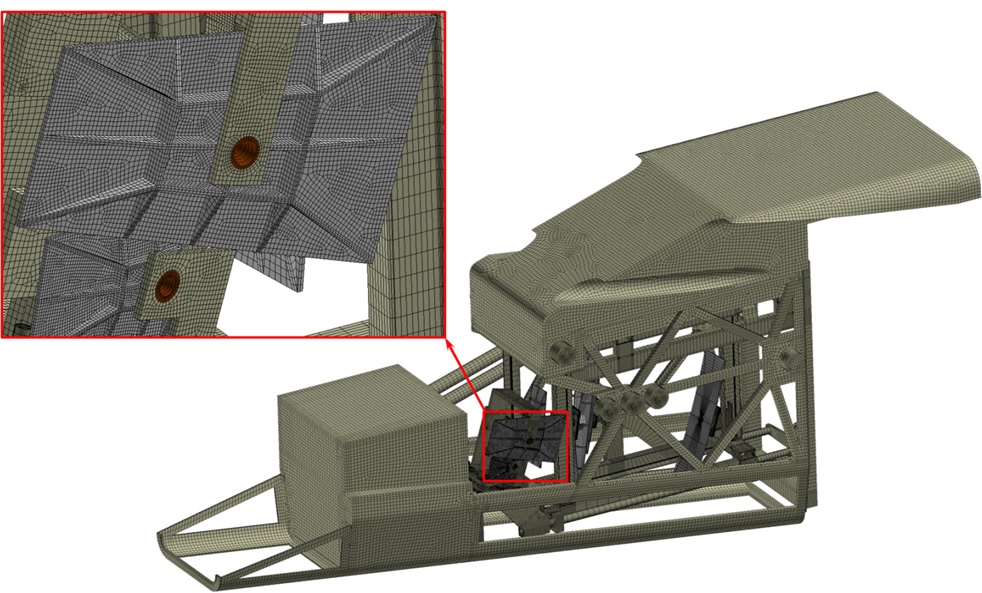Электромагнитные, тепловые и прочностные расчеты диагностического оборудования ITER (2011-2013 гг.)
|
|
Область компетенции:
Отрасли промышленности:
|
| Ключевые слова | Термоядерный реактор, ITER, диагностическое оборудование, электромагнитные расчеты, тепловые расчеты, расчеты прочности, конечно-элементное моделирование |
| Программное обеспечение | CATIA, ANSYS |
| Период проведения | 2011-2013 гг. |
ITER (International Thermonuclear Experimental Reactor) – проект международного термоядерного реактора. В основе проекта лежит предложенная советскими учеными концепция магнитного удержания плазмы токамак. История ITER начинается с 1985 года, когда СССР предложил создать токамак нового поколения совместными усилиями стран, существенно продвинувшихся на тот момент в работе над осуществлением управляемого термоядерного синтеза. В настоящее время в проекте участвуют Российская Федерация, страны ЕС, Индия, Китай, Республика Корея, США и Япония. Строительство ведется на юге Франции (Кадараш). Параметры строящегося токамака являются беспрецедентными, и многое из разрабатываемого для ITER оборудования является уникальным.
Разрабатываемое для ITER оборудование должно выдерживать сильнейшие тепловые, электромагнитные и прочностные нагрузки. Обусловленные этими аспектами требования к конструкции зачастую противоречат друг другу, и предложить вариант, удовлетворяющий всем условиям, невозможно без выполнения многовариантных расчетов. Выполняемые сотрудниками лаборатории "Вычислительная механика" (CompMechLab®) расчеты и исследования диагностического оборудования ITER являются неотъемлемой частью процесса проектирования. Отличительной особенностью механических расчетов для ITER является необходимость решения сопряженных задач механики, теплопроводности и электромагнитизма.
 |
 |
 |
 |
- 27th Symposium on Fusion Technology (SOFT), 2012, Liege (Belgium) - Dynamic structural analysis of a fast shutter with a pneumatic actuator; Engineering analyses of ITER divertor diagnostic rack design;
Nemov A., Panin A., Borovkov A., Khovayko M., Zhuravskaya E., Krasikov Yu., Biel W., Neubauer O. Dynamic structural analysis of a fast shutter with a pneumatic actuator // Fusion Engineering and Design, 2013, vol. 88, Available online 6 April 2013; doi: 10.1016/j.fusengdes.2013.02.143
Abstract. Fast shutters can play important role for the ITER diagnostics. They protect diagnostic mirrors, especially the first ones closest to the plasma, between measurements, during dwell time and baking. In a nominal mode, as it is assumed, for example, for the ITER upper port plug #3 diagnostics, its shutter stays open ∼1 s and closed ∼21 s. The principal idea of the shutter concept is its ability to make fast transitions between the open and closed positions within fractions of second. A pneumatic actuator produces a pressure force to open or close the shutter.
Due to the fast transient nature of the shutter operation, complicated by the parts’ impact interaction, the FE codes using the explicit time integration scheme have an advantage over the implicit ones. The shutter operation is modeled using the explicit solver. Since the shutter dynamic behavior strongly depends on the actuator flood time, different time profiles of the actuator pressure rise (drop) has been verified, including a fast transient with duration of ∼0.1 s. The results of the implicit and explicit solvers are compared. Their pros and cons are pointed out. The system damping, estimations of energy loss and ways to specify damping in FE models are discussed in the paper.
- 11th International Symposium on Fusion Nuclear Technology - Engineering analyses of ITER divertor Thomson scattering
Modestov V.S., Nemov A.S., Borovkov A.I., Buslakov I.V., Lukin A.V., Kochergin M.M., Mukhin E.E., Litvinov A.E., Koval A.N., Andrew P. Engineering analyses of ITER divertor diagnostic rack design // Fusion Engineering and Design, 2013, vol. 88, Available online 6 April 2013; doi: 10.1016/j.fusengdes.2013.02.151
Abstract. The divertor port racks used as a support structure of the divertor Thomson scattering equipment has been carefully analyzed to be consistent with electromagnetic and seismic loads. It follows from the foregoing simulations that namely these analyses demonstrate critical challenges associated with the structure design. Based on the results of the reference structure a modified design of the diagnostic racks is proposed and updated simulation results are given. The results signify a significant improvement over the previous reference layout and the design will be continued towards finalization.
Публикация подготовлена сотрудниками CompMechLab® на основе работы, выполненной в 2011-2013 гг.
